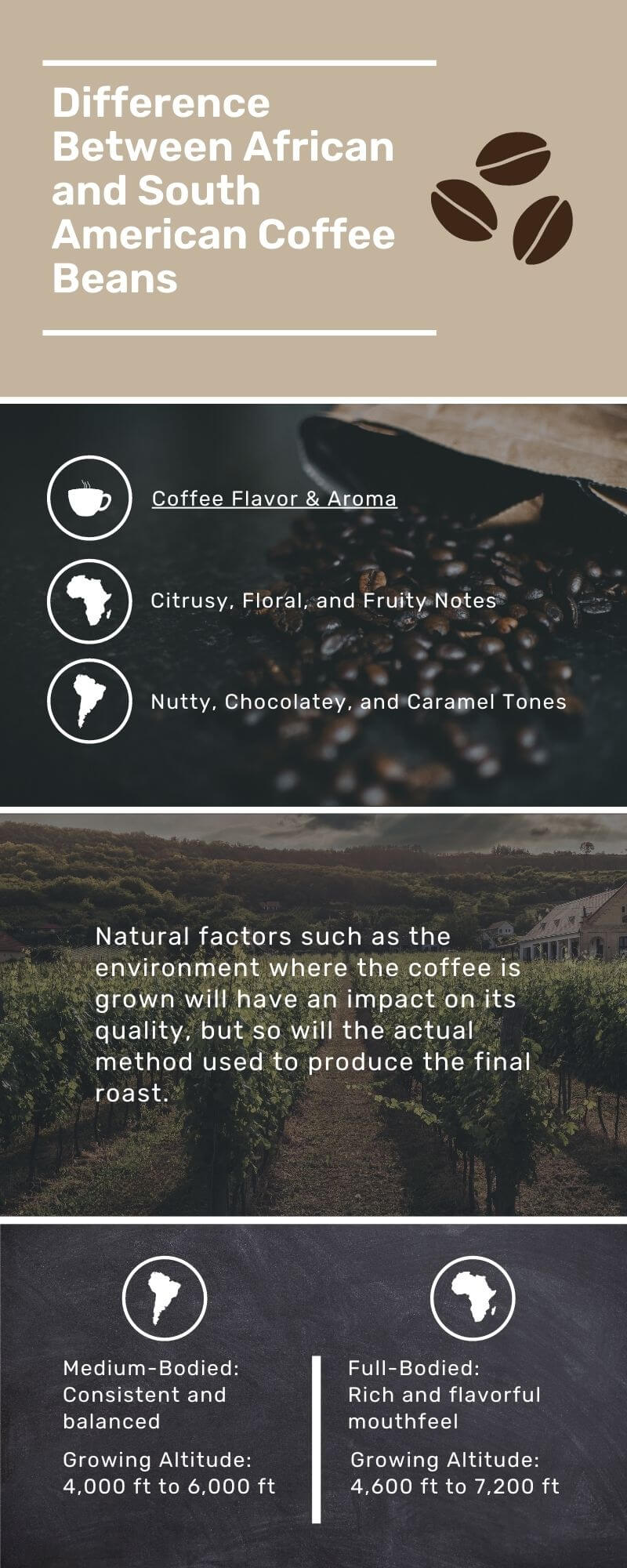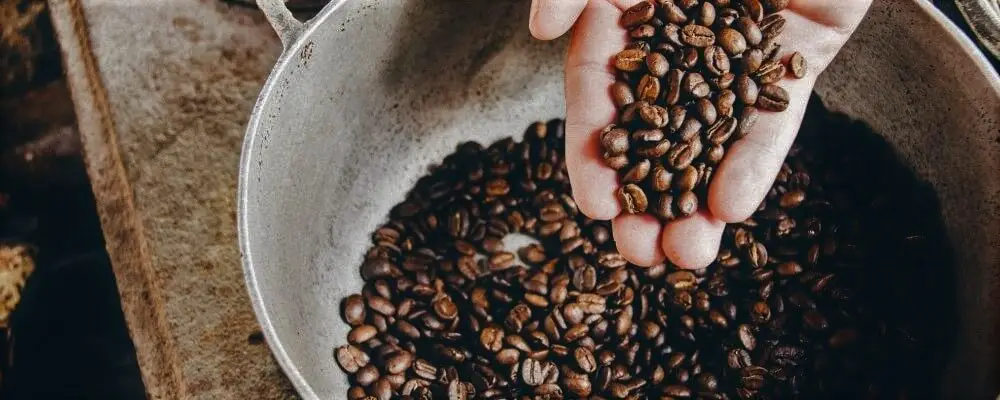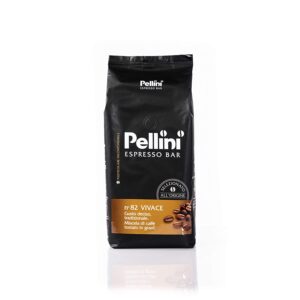Coffee naturally grows along the equator across the whole planet, but the most popular coffee beans originate from South America and Africa. Naturally, most coffee enthusiasts want to find out what makes coffee beans from Africa different from the ones grown in South America?
The main difference between coffee beans from Africa and South America is their flavor profile. African coffee beans have citrusy, floral, and fruity notes, whereas their South American counterparts tend to have nutty, chocolatey, and caramel tones.
Although the difference in flavor is noticeable almost immediately, there are a few other things that make each continent’s coffee bean unique. Natural factors such as the environment where the coffee is grown will have an impact on its quality, but so will the actual method used to produce the final roast.

Every region around the world produces coffee with unique qualities. They are not chemically infused but are inherent in the coffee beans. Different factors affect these qualities.
Such factors include the environment the coffee bean was grown in and the technique used to process the java. Other characteristics make coffee that originates from the same area different such as the unique technique of the farmer or their microclimate. We want to focus on the main differences between African and South American coffee beans.
Does African Coffee Taste Different than South American Coffee?
African coffee beans and South American coffee beans taste differently.
When people think about coffee in South America they usually think of Colombian coffees. They are one of the top three countries that produce and export coffee all over the world. Their java has mellow acidity, a nutty undertone, and strong caramel sweetness. It is often sweet and medium-bodied.
Other South American countries like Brazil (the number 1 coffee supplier on the planet) produce coffees that have a slightly nutty flavor. Chocolate flavored coffee beans are also prevalent in South America. This means that South American coffees taste caramelly, chocolatey, nutty.
Due to the more natural way of processing coffee beans, African coffee beans usually taste like berries, fruits, citrus, wine.
Some coffee experts describe African coffee beans as winey because they have the same combination of taste smell, and mouthfeel people experience when they drink wine. That’s quite understandable as winey taste goes hand in hand with acidity and fruity notes.
African flavors are more exotic, and Ethiopia (the number one coffee supplier in Africa) has thousands of different coffee varieties, most of them uncatalogued. This means that there is potential for the spectrum of flavor to become larger once the varieties are recorded.

Flavors Most Common in African Coffee Beans
Citrus Flavors
Most African coffee beans have a hint of citrus fruits like orange, lime, grapefruit, or lemon. They are noticeable by their slight sourness.
If the coffee bean has the potential to have citrus flavor many factors can influence the amount of the flavor that comes out when the bean is brewed. These factors include the pH level of the soil it is grown in, the minerals in the soil, when the coffee bean was harvested, the processing method used, and how it is roasted.
Floral Notes
Mild floral notes are found in most African coffee beans. These coffee beans usually have delicate floral aromatics such as lavender, jasmine, honeysuckle, elderflower, dandelion, and rose.
Berry Notes
Berry notes can either be subtle with a soft sweetness that add depth to coffee beans that are lighter-bodied, but they can also be tart. Notes like cranberry and boysenberry are tangier and can also be found in most African coffee beans.
Fruit Flavors
African coffee beans are usually processed to retain their fruity flavor while most South/Central American coffee beans are usually burnt which removes the fruity flavor.
Also, coffee beans that are grown at high altitudes tend to be more acidic which is perceived by the brain as fruity crispness. Most African coffee beans are grown in high altitudes and so have deeper fruit flavors.
Soil composition, method of processing, roasting, and harvest, altitude, and climate dramatically affect fruity flavors of coffee.
Flavors Most Common in South American Coffee Beans
Nutty Flavors
The processing methods and the roasting techniques commonly used in South and Central America draw out the aroma and flavor profile of fresh nuts commonly present in the beans grown in that region. These coffee beans usually have hazelnut, almond, and other nut flavors.
Chocolaty Flavors
Most South American coffee beans have chocolate flavors that are sweeter than Central American coffee beans. Coffee beans from South America usually have a slight sweetness that tastes almost like a milk chocolate bar while Central American coffee beans taste more like dark chocolate bars.
It’s common for Colombian coffee beans have hints of cacao.
Carmel Flavors
South American/Central American coffee beans have flavor notes of oxidized sugar. They have the flavor and aroma profile of candy or syrup created by caramelized sugar. Caramel notes can be perceived from these coffee beans as they are encased with sugars that caramelized when it was roasted.
Coffee Body Types (Light, Medium, Full Body)
When people talk about full-bodied and medium-bodied coffee they are talking about the texture and the mouthfeel of the coffee. Full-bodied coffees have a more pleasant mouth feel because of how strong and creamy they are.
The type of body a coffee has depends on the number of oils and suspended and dissolved solids extracted from the coffee beans. It can range from watery and thin to creamy and thick. These oils and solids cause a pleasant feeling of roundness.
Fuller-bodied coffee is grown in high altitudes. Most African coffee beans are full-bodied as the beans are grown in high altitudes.
South American coffee beans are often medium-bodied or light-bodied.
Medium-bodied coffee doesn’t have the same texture and mouthfeel as a full-body coffee but is also slightly weightier than light-bodied drinks. They are considered beginner-friendly because of their subtle texture. They are certainly easy to drink daily.
A light-bodied coffee is one that is often described as watery, with little or no texture on the tongue. Different factors like low altitudes and soils that lack nutrients can cause coffee to have a light body. Also, brewing methods where paper filters are used to get rid of oils and other solids from coffee beans can also affect the body of a cup of joe. Coffee can also become light-bodied when it is brewed quickly.

Coffee Processing (Dry/Washed Coffee)
The dry process is the most organic way of processing coffee. The ultimate flavor of a coffee roast is determined by the method used to process the coffee bean. For the dry process, the coffee bean is left to soak in its flavor for a long time without being bothered. This creates the explosive and distinct flavor that African coffee beans are known for.
The coffee fruit is harvested and sorted then laid out in a place that gets a lot of sunshine. The coffee cherries are left to dry and ferment in their original state and all their natural flavors just like how grapes are dried to become raisins.
In the dry process, the beans have more time to bathe in the flavors of the coffee cherries as the mucilage around the beans gets broken down by enzymes. This causes the more fruity and fermented flavors dry-processed coffee beans have.
These naturally processed coffee beans are less known in most countries though they are becoming more popular these days as baristas use them to showcase the natural flavors of the coffee.
Wet processed, often called ‘washed’, coffee beans are dried without the cherry. Before drying the coffee, the flesh of the coffee cherries is removed from the beans using a machine. South American and Central American countries mostly use this method when processing their coffee beans.
When the machine is done decoupling the cherries, they are put in a water tank to await the fermentation process that will then remove any flesh remaining in the coffee bean. Factors like climate and altitude affect the amount of time the coffee beans need to be fermented.
Roughly 24-72 hours are required for the fermentation process. The coffee beans are then washed to remove any remaining flesh and then dried out by natural sunlight. Regions that have excess humidity or not enough sunlight usually use machines to dry the coffee beans.
Although it’s more expensive, this process creates cleaner and brighter cup profiles that most roasters strive for. It’s definitely a stable way of processing coffee because it reduces the risk of defects that are common in naturally processed beans.
Is African or South American Coffee More Acidic?
In general, African coffee is more acidic than South American coffee because it’s roasted for shorter periods of time. It’s the roasting process that cooks the coffee beans and dissolves some of the components of the bean that cause acidity.
Since African coffee has a fuller body it doesn’t need to be roasted for long, whereas South American coffee roasters like to bring out the deeper flavors of their beans by letting the beans roast for longer periods of time. The roasting process destroys organic chemicals thereby causing the sweetness of caramelizing sugars to mute the acidity.
Different factors such as climate, origin, and the processing methods can affect the acidity of coffee beans. Organic compounds such as chlorogenic acid that is found in coffee beans impart acidic qualities which simply means, the lighter the roast, the more acidic the coffee bean will be, and the darker the roast, the more bitter it will be.
Texture (Mouthfeel)
Have you ever heard the saying “The clean cup is the starting point of coffee quality” before? In simple terms that means the quality of coffee can be determined by how clean the coffee beans are. ‘Clean’ is the term used to describe coffee that leaves little or no aftertaste in your mouth.
South and Central American coffee is often qualified as clean because of the way it’s produced, washed, and roasted.
The jury is still out on whether mouthfeel and body mean the same thing. Honestly, it’s hard to get people in the coffee community to agree on most things.
Does Coffee from Africa and South America Grow at Different Altitudes?
As mentioned before soil composition, climate, and method of harvesting give coffee its specific flavor and aroma profile but so does the altitude in which the coffee beans were grown.
Most countries in Africa grow their coffee beans in high elevations between 4,600 feet to 7,200 feet above sea level. Some of these countries include Uganda, Ivory Coast, Kenya, and of course Ethiopia, the birthplace of coffee.
Meanwhile, most South American countries grow their beans in slightly lower elevations of 4,000 feet to 6,000 feet. The most popular South American coffee suppliers are Brazil, Columbia, and Honduras.
It’s worth knowing that each country and region has a different environment and altitude for growing coffee.
Most great coffees are found at elevations of at least 4,000 feet above sea level but there are exceptions like Hawaiian Kona which doesn’t grow higher than 2,000 feet.
Summary
By now I trust you have a clear understanding of the differences between African and South American coffee. I’ll try to wrap it all up in a quick and easy-to-digest summary.
The flavor of coffee from each continent differs due to the environment and soil it was grown in. African coffee tends to be more fruity and earthy by nature with a fuller body and a little more acidity. American coffee, on the other hand, has nutty and chocolate tones with a medium body and less acidity.
If you haven’t tried coffee from both continents before you should give it a go and see what the buzz is about.
Related Questions
Is There More than One Type of Coffee Bean?
Even though over 100 different types of coffee species exist you only need to concern yourself with two. Arabica and Robusta coffee beans account for nearly all the coffee consumption on the planet.
If you want to know more check out this guide to the best types of coffee beans.
Which Country Grows the Best Coffee Beans?
Colombian coffee is known around the world for its rich flavor and unquestionable quality. Obviously, the idea of ‘best coffee’ can be different for each individual but it’s hard to dispute that Columbia makes some of the best coffee in the world.
How to Make Coffee Less Acidic?
If you’re concerned about acid reflux, heartburn, or even IBS resulting from drinking coffee there are a few simple ways to make coffee less acidic. Adding everyday household items like milk, and sugar can make your coffee easier on your stomach. If you are looking for different ways to reduce acidity in your coffee here is a link to the full article.
References
Coffee production Latin America: https://www.statista.com/statistics/810893/coffee-production-latam-country/#:~:text=Brazil%20is%20by%20far%20the,50%20million%2060%2Dkilogram%20bags
African Coffee Production: https://gro-intelligence.com/insights/articles/african-coffee-production-opportunities-and-challenges
I’ve always seen coffee as a way of bringing people together. Everywhere I go people seem to enjoy a fresh cup of coffee and that’s what drives my passion. There’s always a new brew to master, and there’s always a new face to enjoy it with. Hitch a ride with me on a coffee-fueled adventure to find a perfect cup.


